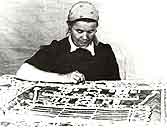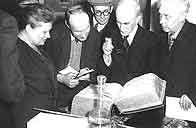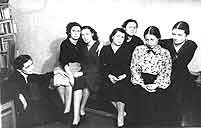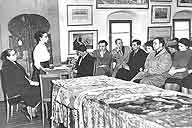The Main Steps of the Museum Activity (page 5)
 Åhe post-war time was the period of the intensive study of the ancient Lavra collection, the first steps in the research of folk art, first conferences, first serious publications (after 1920s). During several post-war years there was a complete rearrangement of the Museum according to the general plan of 1944, which was highly estimated by V.N. Lazarev, S.V. Bakhrushin.
Åhe post-war time was the period of the intensive study of the ancient Lavra collection, the first steps in the research of folk art, first conferences, first serious publications (after 1920s). During several post-war years there was a complete rearrangement of the Museum according to the general plan of 1944, which was highly estimated by V.N. Lazarev, S.V. Bakhrushin.
 Åhe expositions “Old Russian Art of the 14th – 17th century” (1946), “Folk Art” (1947, reorganized in 1952), “Russian Art of the 18th century” (reorganized in 1954 into “Russian Applied Art of the 18th – 19th century), based on the serious scientific research, became more systematic. The exhibiting principles determined the Museum character for the subsequent decades, though all those exhibitions were constantly developing.
Åhe expositions “Old Russian Art of the 14th – 17th century” (1946), “Folk Art” (1947, reorganized in 1952), “Russian Art of the 18th century” (reorganized in 1954 into “Russian Applied Art of the 18th – 19th century), based on the serious scientific research, became more systematic. The exhibiting principles determined the Museum character for the subsequent decades, though all those exhibitions were constantly developing.

The exhibition “Old Russian Art and Culture of the 15th – 17th century” was housed in three halls of the former Monastery Sacristy.
The author Yu.A. Lebedeva presented the unique collection chronologically and in all aspects, which gave an opportunity to trace the development of Russian national art. As time went on, the exhibition extended, new exhibits were added.

In the subsequent displays “Old Russian Painting” and “Old Russian Applied Art” of 1974 they used the same scientific principles and exhibition methods. The exhibitions were organized thanks to the successful work of the Museum restorers.
|


